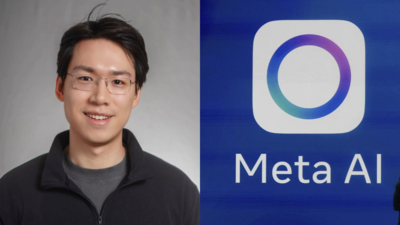AI Research
MIT Researchers Harness Generative AI to Develop Compounds Targeting

In a groundbreaking study published in the prestigious journal Cell, researchers at the Massachusetts Institute of Technology (MIT) have leveraged the capabilities of artificial intelligence (AI) to innovate antibiotic therapy against two notoriously hard-to-treat bacterial infections: drug-resistant Neisseria gonorrhoeae and multi-drug-resistant Staphylococcus aureus, also known as MRSA. This promising approach marks a significant step forward in the ongoing battle against antibiotic-resistant bacteria, which pose a serious global health threat, causing millions of deaths annually.
The study initiated by the MIT team utilized generative AI algorithms to design over 36 million potential antibiotic compounds, an audacious effort that expands the chemical space for drug discovery. By computationally screening these compounds for antimicrobial properties, the researchers were able to identify several leading candidates exhibiting structural novelty compared to existing antibiotics. These candidates appear to function through previously uncharacterized mechanisms, primarily by disrupting bacterial cell membranes, thereby presenting a unique avenue for therapeutic intervention.
Historically, the development of new antibiotics has stagnated, with the Food and Drug Administration (FDA) approving only a handful of new classes in the past four decades, mostly derivatives of existing drugs. Consequently, with rising bacterial resistance, the need for innovative antibiotic strategies has never been more acute. Antibiotic resistance is responsible for an estimated 5 million deaths globally each year, compelling researchers to seek methods that circumvent conventional approaches. The MIT Antibiotics-AI Project aims to address this crisis by exploiting AI technologies to screen extensive libraries of existing chemical compounds, yielding several promising drug candidates in earlier works, such as halicin and abaucin.
.adsslot_0EeMsAwZld{width:728px !important;height:90px !important;}
@media(max-width:1199px){ .adsslot_0EeMsAwZld{width:468px !important;height:60px !important;}
}
@media(max-width:767px){ .adsslot_0EeMsAwZld{width:320px !important;height:50px !important;}
}
ADVERTISEMENT
In this latest endeavor, the MIT researchers took a more radical approach by venturing into uncharted territory—specifically, generating wholly new compounds that are not found in existing chemical libraries. The decision to apply AI to theorize previously undiscovered molecules opened a broader landscape of potential drug candidates that could lead to breakthroughs in antibiotic effectiveness. This imaginative concept is a clear departure from traditional methods, allowing scientists to explore new realms of chemical diversity.
To accomplish their objectives, the research team employed two distinct AI-driven approaches while focusing on their target pathogens: Neisseria gonorrhoeae and Staphylococcus aureus. The first strategy revolved around fragment-based design, wherein the researchers identified promising fragments capable of inducing antimicrobial effects. Initially, they constructed a vast repository of 45 million known chemical fragments. By utilizing machine-learning models trained to predict antibacterial activity, they filtered this extensive library down to nearly 4 million fragments, effectively narrowing the pool by eliminating cytotoxic and structurally similar compounds to known antibiotics.
By employing these rigorous selection criteria, the researchers ultimately refined the candidates to about 1 million unique fragments. This detailed filtration process highlights their strategic focus on innovating antibiotic mechanisms, which is essential in tackling antimicrobial resistance. The use of a specific fragment, referred to as F1, turned out to be a pivotal moment in their investigation. As a direct consequence of this foundational work, they ventured to use this fragment as the basis for generating further compounds through state-of-the-art generative AI algorithms.
The researchers employed two sophisticated AI algorithms: CReM (Chemically Reasonable Mutations) and F-VAE (Fragment-based Variational Autoencoder). CReM works by mutating the chosen fragment using various methods, including adding, replacing, or deleting atoms and functional groups. In contrast, F-VAE constructs complete molecules based on the parameters of the identified fragment. By combining these approaches, they generated an astonishing array of approximately 7 million new candidates featuring the F1 fragment, showcasing the potential of AI in revolutionizing traditional drug discovery.
Through meticulous computational screening, the research team identified about 1,000 candidates that demonstrated promising activity against the target bacteria. They subsequently contacted chemical synthesis vendors to produce these compounds and were able to successfully synthesize two, one of which, designated NG1, exhibited significant efficacy in laboratory tests, proving its ability to eradicate Neisseria gonorrhoeae in both in vitro and animal models of resistant infection. NG1’s mechanism of action involves interacting with a protein known as LptA, which is vital for the synthesis of the bacterial outer membrane, underlining the innovative approach of targeting previously unexplored pathways.
In addition to examining Neisseria gonorrhoeae, the researchers also set their sights on Staphylococcus aureus, employing a similar generative framework but with fewer constraints. This unconstrained approach allowed the AI to freely generate compounds while adhering to the general chemical bonding rules, ultimately leading to the creation of an additional 29 million potential compounds. The refinement process again followed rigorous filtering similar to that applied in the previous rounds, leading to the identification of 90 viable compounds.
The compounds conceived through this innovative AI-based approach led to the successful synthesis and testing of 22 molecules, six of which displayed robust antibacterial activity against multi-drug-resistant Staphylococcus aureus in laboratory conditions. Notably, the compound DN1 emerged as a leading candidate once again, demonstrating the potential to effectively clear MRSA skin infections in animal models. This result further emphasizes the efficacy of the newly designed molecules, which target bacterial cell membranes but also hint at a broader mechanism of action that transcends the interaction with a single protein.
Going forward, the research team is collaborating with Phare Bio, a nonprofit focusing on antibiotic innovation, to improve the pharmacological properties of NG1 and DN1 for subsequent clinical testing. This partnership encapsulates the collaborative spirit essential for tackling complex health challenges. With continued support and funding from entities such as the U.S. Defense Threat Reduction Agency, the National Institutes of Health, and various private foundations, this work represents an exciting step in the ongoing quest to develop novel antibiotics that can keep pace with evolving bacterial resistance.
The future of antibiotic development may very well hinge upon the continued application of AI technology in discovering and designing novel antimicrobial compounds. Researchers are actively looking to extend this generative approach to target other clinically significant pathogens, including Mycobacterium tuberculosis and Pseudomonas aeruginosa. As efforts continue to innovate the landscape of antimicrobial therapy, the research from MIT stands as a beacon of hope in the field, promising to usher in a new era of effective and resilient antibiotic treatments.
Subject of Research: Novel antibiotic design using AI for drug-resistant bacteria
Article Title: A generative deep learning approach to de novo antibiotic design
News Publication Date: 14-Aug-2025
Web References: http://dx.doi.org/10.1016/j.cell.2025.07.033
References: ‘Cell’ journal, MIT Antibiotics-AI Project
Image Credits: Massachusetts Institute of Technology
Keywords
Tags: antibiotic therapy innovationantimicrobial compound developmentcombating antibiotic resistancecomputational screening of compoundsdrug-resistant bacteria solutionsgenerative AI in drug discoveryglobal health threat of antibiotic resistanceMIT researchersMRSA antibiotic candidatesNeisseria gonorrhoeae treatmentnovel therapeutic mechanisms in antibioticsstructural novelty in antibiotics
AI Research
Artificial intelligence, rising tuition discussed by educational leaders at UMD

DULUTH, Minn. (Northern News Now) – A panel gathered at UMD’s Weber Music Hall Friday to discuss the future of higher education.
The conversation touched on heavy topics like artificial intelligence, rising tuition costs, and how to provide the best education possible for students.
Almost 100 people listened to conversations on the current climate of college campuses, including UMD Associate Dean of the Swenson College of Engineering and Science Erin Sheets.
“We’re in a unique and challenging time, with respect to the federal landscape and state landscape,” said Sheets.
The three panelists addressed current national changes, including rising tuition costs and budget cuts.
“That is going to be a structural shift we really are going to have to pay attention to, if we want to continue to commit for all students to have the opportunity to attend college,” said panelist and Managing Director of Waverly Foundation Lande Ajose.
Last year alone, the University of Minnesota system was hit with a 3% budget cut on top of a loss of $22 million in federal grants. This resulted in a 6.5% tuition increase for students.
Even with changing resources, the panel emphasized helping students prepare for the future, which they said includes the integration of AI.
“As students graduate, if they are not AI fluent, they are not competitive for jobs,” said panelist and University of Minnesota President Rebecca Cunningham.
Research shows that the use of AI in the workplace has doubled in the last two years to 40%.
While AI continues to grow every day, both students and faculty are learning to use it and integrate it into their curriculum.
“These are tools, they are not a substitute for a human being. You still need the critical thinking, you need the ethical guidelines, even more so,” said Sheets.
Following the panel, UMD hosted a campus-wide celebration to mark the inauguration of Chancellor Charles Nies.
Click here to download the Northern News Now app or our Northern News Now First Alert weather app.
Copyright 2025 Northern News Now. All rights reserved.
AI Research
AI startup CEO who has hired several Meta engineers says: Reason AI researchers are leaving Meta is, as founder Mark Zuckerberg said, “Biggest risk is not taking …”

Shawn Shen, co-founder and CEO of the AI startup Memories.ai, has stated that some researchers are leaving Facebook-parent Meta due to frequent company reorganisations and a desire to take on bigger risks. Shen, who left Meta himself last year, notes that constant changes in managers and goals can be frustrating for researchers, leading them to seek opportunities at other companies and startups. Shen’s startup, which builds AI to understand visual data, recently announced a plan to offer up to $2 million compensation packages to researchers from top tech companies. Memories.ai has already hired Chi-Hao Wu, a former Meta research scientist, as its chief AI officer. Shen also referenced a statement from Meta CEO Mark Zuckerberg who earlier said that the “the biggest risk is not taking any risks.”
What startup CEO Shen said about AI researchers leaving Meta
In an interview with Business Insider, Shen said: “Meta is constantly doing reorganizations. Your manager and your goals can change every few months. For some researchers, it can be really frustrating and feel like a waste of time. So yes, I think that’s a driver for people to leave Meta and join other companies, especially startups.There’s other reasons people might leave. I think the biggest one is what Mark (Zuckerberg) has said: ‘In an age that’s evolving so fast, the biggest risk is not taking any risks. So why not do that and potentially change the world as part of a trillion-dollar company?’We have already hired Eddy Wu, our Chief AI Officer who was my manager’s manager at Meta. He’s making a similar amount to what we’re offering the new people. He was on their generative AI team, which is now Meta Superintelligence Labs. And we are already talking to a few other people from MSL and some others from Google DeepMind.”
What Shen said about hiring Meta AI researchers for his startup
Shen noted that he’s offering AI researchers who are leaving Meta pay packages of $2 million to work with his startup. He said: “It’s because of the talent war that was started by Mark Zuckerberg. I used to work at Meta, and I speak with my former colleagues often about this. When I heard about their compensation packages, I was shocked — it’s really in the tens of millions range. But it shows that in this age, AI researchers who make the best models and stand at the frontier of technology are really worth this amount of money. We’re building an AI model that can see and remember just like humans. The things that we are working on are very niche. So we are looking for people who are really, really good at the whole field of understanding video data.”He even explained that his company is prioritising hires who are willing to take more equity than cash, allowing it to preserve its financial runway. These recruits will be treated as founding members rather than employees, with compensation split between cash and equity depending on the individual, Shen added.Over the next six months, the AI startup is planning to add three to five people, followed by another five to ten within a year, alongside efforts to raise additional funding. Shen believes that investing heavily in talent will strengthen, not hinder, future fundraising.
AI Research
AARP warns of “Grandparent Scams”

MONTGOMERY, Ala. (WSFA) – While artificial intelligence is rapidly transforming our world, a troubling trend shows scammers using it to steal from seniors, specifically grandparents.
You’ve probably heard the phrase ‘seeing is believing’ your whole life. But in an age of artificial intelligence, the turn of phrase doesn’t exactly stand the test of time. When it’s in the wrong hands, this new technology can make our senior citizens, who didn’t grow up in the digital age, a vulnerable population.
“One of the ways we see that being done is with what’s known as the grandparent scam,” Jamie Harding, AARP of Alabama Communications director, said. “The grandparent scam is basically, it usually happens late at night, they’re asleep, and someone calls them purporting to be their grandchild, they’re in trouble, they need money immediately.”
However, it isn’t actually their grandchild on the other end of the phone. Scammers have used AI technology to replicate the sound of their grandchild’s voice to try to take money.
“These are very sophisticated international crime rings, and they have access to a lot of very sophisticated technology,” Harding said.
To protect your family from these scams, Harding suggests having a code word that every member of your family knows so you can be sure it’s actually your loved one calling.
She also advises you not to answer phone calls from unknown numbers and to keep your personal information off the internet.
Not reading this story on the WSFA News App? Get news alerts FASTER and FREE in the Apple App Store and the Google Play Store!
Copyright 2025 WSFA. All rights reserved.
-

 Business1 week ago
Business1 week agoThe Guardian view on Trump and the Fed: independence is no substitute for accountability | Editorial
-
Tools & Platforms4 weeks ago
Building Trust in Military AI Starts with Opening the Black Box – War on the Rocks
-

 Ethics & Policy1 month ago
Ethics & Policy1 month agoSDAIA Supports Saudi Arabia’s Leadership in Shaping Global AI Ethics, Policy, and Research – وكالة الأنباء السعودية
-

 Events & Conferences4 months ago
Events & Conferences4 months agoJourney to 1000 models: Scaling Instagram’s recommendation system
-

 Jobs & Careers2 months ago
Jobs & Careers2 months agoMumbai-based Perplexity Alternative Has 60k+ Users Without Funding
-

 Education2 months ago
Education2 months agoVEX Robotics launches AI-powered classroom robotics system
-

 Podcasts & Talks2 months ago
Podcasts & Talks2 months agoHappy 4th of July! 🎆 Made with Veo 3 in Gemini
-

 Funding & Business2 months ago
Funding & Business2 months agoKayak and Expedia race to build AI travel agents that turn social posts into itineraries
-

 Education2 months ago
Education2 months agoMacron says UK and France have duty to tackle illegal migration ‘with humanity, solidarity and firmness’ – UK politics live | Politics
-

 Podcasts & Talks2 months ago
Podcasts & Talks2 months agoOpenAI 🤝 @teamganassi

